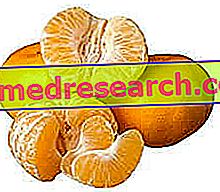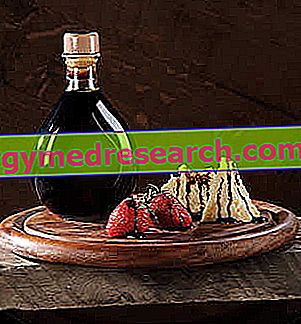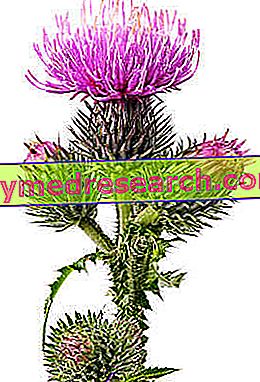Generality

Mandarin is a real citrus fruit, like: cedar, pomelo, mandarancio (clementine, tangerine etc.), grapefruit, orange and lemon. Like cedar and pomelo, mandarin is considered a "pure" species, while all other citrus fruits are the result of various botanical crosses.
| Nutritional composition of Mandarin - Reference values of INRAN Food Composition Tables | ||||||||||||||||||||||||||||||||||||||||||||||||||||||||||||||||||||||||||||||||||||
 | ||||||||||||||||||||||||||||||||||||||||||||||||||||||||||||||||||||||||||||||||||||
Nutritional values (per 100 g of edible portion)
| ||||||||||||||||||||||||||||||||||||||||||||||||||||||||||||||||||||||||||||||||||||
The mandarin tree (as well as the leaves and fruits) is not large. The ripe fruit is spherical, light orange (or green if unripe) and weighs approximately between 50 and 100g; the pulp (also orange) can be differentiated into segments, has a sweet taste (a unique characteristic among the original Species) and is very easily separated from the peel.
The Italian variety of mandarin "par excellence" is the late Ciaculli, typical Sicilian from the Palermo area. It is however necessary to specify that the distinction between mandarin and mandarin orange, due to the numerous crossings carried out throughout history, is not always very clear. Satsuma, for example, which has long been considered the "typical American mandarin", today seems to represent the most ancient variety of mandarancio introduced from Japan; it is not by chance that the American classification does not provide for the structuring of a group of mandarin oranges in its own right, but unites them entirely with that of the mandarins.
Nutritional properties
Mandarin is a fruit rich in water, mineral salts, simple sugars and vitamins. It lends itself very much to the sportsman's diet and, among its various properties, is an excellent source of ascorbic acid (vit. C).
The energy intake is considerable (compared to other products of the same category) and made almost entirely from fructose; this characteristic makes it necessary to consume the mandarin in smaller portions than other fruits such as apples, pears, oranges, clementines, kiwis, etc., but more or less the same ones referring to grapes, khaki and figs. The glycemic load of good entity and the caloric intake far from negligible make mandarin a fruit to be consumed in moderation, especially in case of diabetes and overweight .
The mandarin contains good amounts of dietary fiber of which a more than significant fraction of soluble components (viscous), useful in the prevention and moderation of constipation.
As far as mineral salts are concerned, mandarin is rich in potassium, while water-soluble C, or ascorbic acid, stands out for vitamins.



